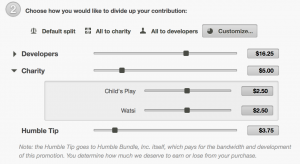Never, ever give up!
During my ongoing literature review I often discover interesting facts about things I’ve never thought about. Sometimes I can connect these facts with my own observations: The result is mostly a completely new idea why things are as they are. Maybe these ideas are new to you, too. Therefore I’ll share my new science based knowledge with you!
This week: This time, I try to illustrate how computer games might help us to make our dreams come true.
„Never, ever give up. You can do what you want, if you just work hard enough.“ A very important and motivating thought. This might sound a bit like a seminar for managers, but it applies to all of us. If we have a dream and we start to chase that dream, we might be able to make that dream come true, if we just work hard enough.
Computer games might help us a bit to gain enough motivation to start something new. Computer games challenge us and we’re often barely strong enough to survive the challenge, but we can do it, if we give our very best. However, computer games also help us to face setbacks. Succeeding at a hard challenge often means failing very often to learn how to approach the challenge. In computer games, we can do this and we also like doing it this way. Nothing is more boring than a computer game, that just let us run through without any challenges. The virtual environments always give us some hope, that we can beat the challenge and beat the game.[1]
Playing computer games shows us, that we can reach our goals, if we work hard enough. We only need to apply this knowledge to our real life.[1] Of course, it is much more easy to succeed in a game than in reality. Often game successes are also much more obvious and much more colorful, but the idea behind remains the same.
Let’s compare playing a game with hiking, a real world activity. Of course, I could compare it with any other activity, but the hiking example might be much easier to illustrate than all the other activities.
As a hiker, you like to be out in the nature and maybe hike on top of a mountain or around a huge valley. If you’re new to this activity, you might be not able to reach the top of a mountain or walk around the whole valley. You just don’t have the endurance to walk such a long distance. Although you can’t reach the end of your goals, you can start doing some shorter hikes to gain more endurance. You will experience some issues, that you might not be able to walk the desired distance or you experience muscle ache after a hike.
Especially not reaching your goal right away or being slow might seem as a failure, but this is the same thing as if you get defeated by an enemy in a computer game. You just have to try again, if you want to defeat the challenge. You have to believe in yourself, that you can do it.
In the end, you might be able to hike on top of that one big mountain. You’ve overcome all these setbacks and you reached your goal. At this point, the whole concept can be applied to everything else. If you have a dream and you start chasing it, you can make the dream come true. You just have to stay true to who you are and believe in yourself.
Computer games can’t help you to fight all these small battles, but they can give you the first initial impuls to believe in yourself.
Unfortunately, Christmas is already over and we’re sailing towards the end of the year. Around New Year we also have the tradition to make some New Year resolutions and I like to encourage you to stick to your New Year resolutions. Believe in yourself and never give up – you can live your dreams!
Happy New Year everyone!
References:


